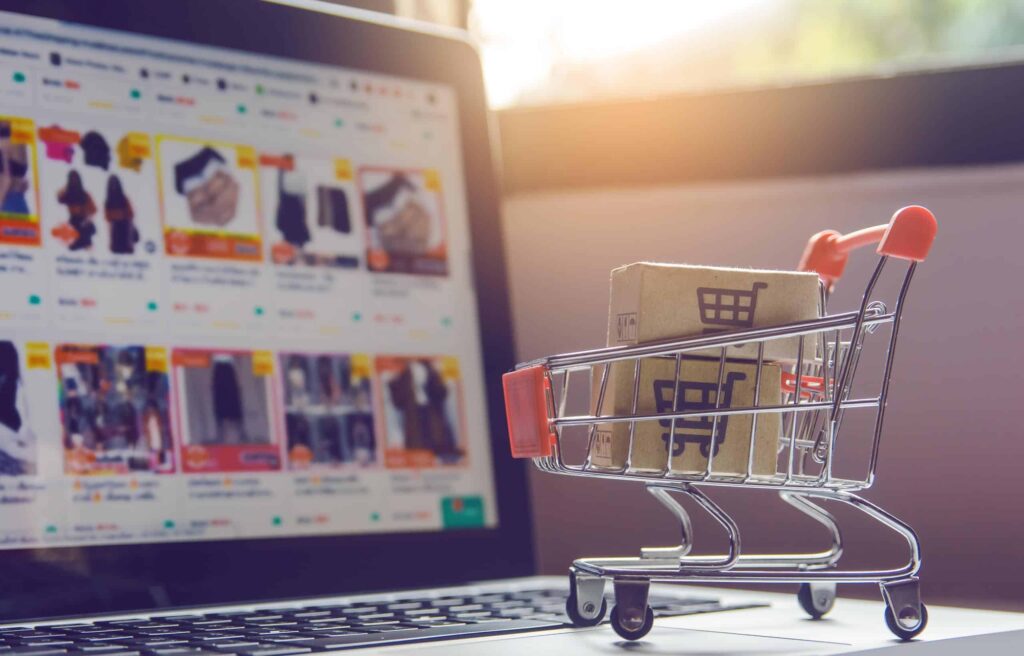It’s no secret that online shopping boomed during the pandemic, with many physical retailers forced to close their doors for months of lockdown. What may surprise you is just how big of an impact this had. According to figures from the Office of National Statistics, ecommerce grew by 46% in 2020, the largest increase since the internet became more widely accessible to consumers a decade ago.
Today, the average adult spends around 29% more time online than they did pre-pandemic. That means as many as 41 hours per week spent surfing, researching and shopping. Shopper attitudes have shifted too, with around one in two people saying they aren’t eager to return to physical stores post-pandemic.
It’s clear, if you’re a retailer, an online presence is no longer optional. It’s essential for survival.
If you’re a strictly bricks-and-mortar only business, the thought of launching an e-commerce offering can be overwhelming. However, it’s also a business-critical decision and if done correctly, could see a valuable new source of revenue opened up.
Step 1: Decide what you want to sell
One clear lesson learnt from the pandemic is that those businesses that remain agile and able to pivot are the ones best placed to thrive under the new normal. When bars and restaurants closed, quick thinking chefs launched cook at home recipe kits for example, which they marketed via their existing websites and social media.
This illustrates the value in thinking differently. If your present set up doesn’t lend itself well to online selling, consider how you might take an aspect of your offering and adapt it to be suitable for ecommerce. If your inventory is too broad or your supply chain complex, select one product line or category that you could sell online. If your current services are entirely bespoke – for example if you’re a tailor or manufacture made-to-order workwear – create an off-the-shelf version specifically for online retailing.
Step 2: Appoint a web designer
Once you have a firm idea of what you plan to sell online, you’ll need to engage the services of a web designer. We can help you navigate the entire process, from recommending the best e-commerce CMS to choosing a domain name and arranging hosting and payment processing for you. We’ll also design and build your site, which is the most exciting part if you’re going online with an e-commerce web site design for the first time. This is where your vision comes to life and your digital store takes shape.
Step 3: Get comfortable with your CMS
Getting to grips with the back end of the site can be daunting but, choosing a tool like WordPress & WooCommerce makes life much easier. This is the engine behind your website. It’s where you can add new pages and products and tweak existing text so it’s important that you spend a little time becoming familiar with this system.
Step 4: Prepare your text and product images
While your website is being built, you have a great opportunity to work on the text. If you need to bring in a photographer to take compelling images of the products you want to sell, do it early on in the build process so you have everything ready to go as soon as your site is built.
Now is also a good time to work on your product descriptions. We often recommend that you have both a short and long description for each item. The short description may be just a line or two long with a few bullet points highlighting key information (such as material or dimensions). The long description can then go into more detail if you have additional information to share.
Step 5: Document your marketing plan
Getting the word out about your new online store is one of the most pressing jobs on your to do list. Creating a documented plan which maps out what you are going to do, when you’re going to do it and how much it will cost will help you to better manage your budget and provide a structured, organised approach to your activity.
You’ll need to think about SEO, social media marketing and potentially some paid advertisements such as PPC ads as a starting point.
Step 6: Arrange your logistics and internal team
Processing online orders requires a clear process and assigned team members. You will need to have someone monitoring the site for orders coming in for example, and ensure those orders are passed over to a designed person to pick, pack and then ship out.
You may also need to create a dedicated space in your warehouse or storeroom to process your online orders.
Before your site goes live to the public, ensure you have a logistics company in place, all of your packaging supplies stocked up and several test runs completed to give everyone on your e-commerce team the opportunity to become familiar with any new processes and requirements. This is also a chance to identify any potential pitfalls or roadblocks you hadn’t envisioned before you physically attempt to process an online order.
Step 7: The launch!
The big day! Launching your new website is a milestone for your business. By now, you’ll have your operations in place, your marketing plan rolling out and your site will be fully tested before it goes online ready to welcome shoppers.
Make sure you tell your bricks-and-mortar customers about your new online space, post an announcement on your social media, add your new web address to your business cards, receipts and email footers and above all, be prepared to quickly pack and post your first online orders.
Step 8: Post-launch
After the excitement of the launch comes the vital post-launch stage. This is where you market your site, take steps to increase traffic, consider promotions to increase order values and refine all of your processes to ensure your new e-commerce arm operates as effectively as possible.
If you’re considering going online for the first time, speak to a member of our team today to find out how we can help with stress-free web design and e-commerce support.




